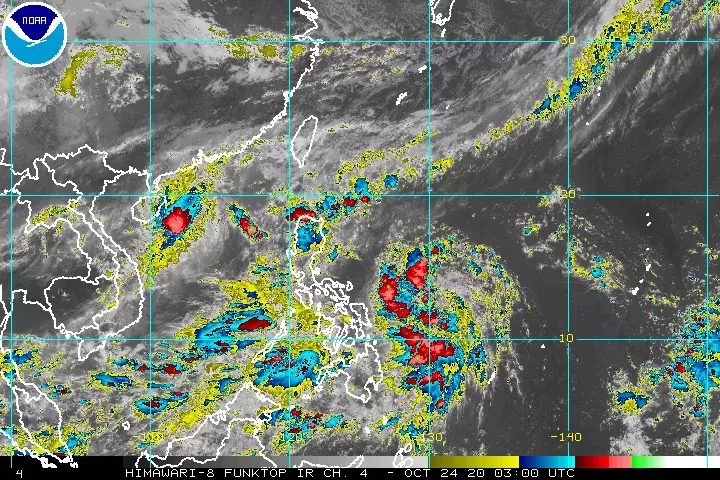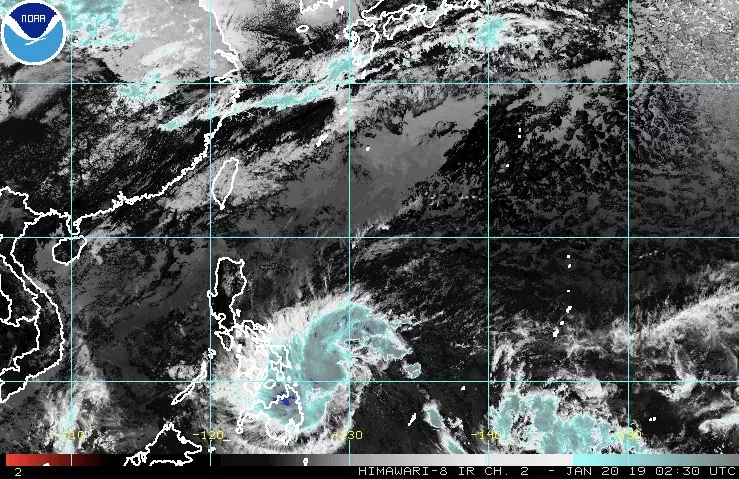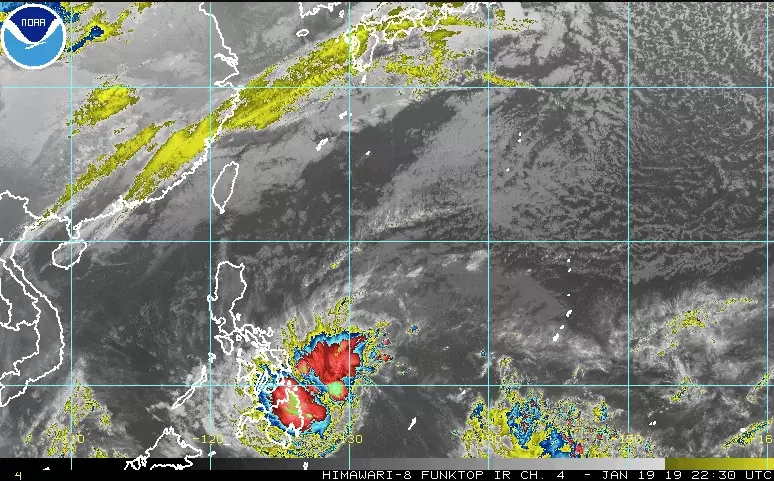|
The Philippines is once again at the mercy of Typhoon Amang as it enters the country and brings heavy rains and strong winds in its wake. As of April 12, 2023, the Philippine Atmospheric, Geophysical and Astronomical Services Administration (PAGASA) declared that Tropical Depression Amang is over the Surigao del Norte province. Officials have issued a warning to residents of Eastern Visayas, Bicol, Eastern Mindanao, and Caraga to prepare for the effects of the typhoon as it continues to pass through the Philippines.The typhoon is expected to bring heavy rain, possible landslides, floods, and power outages.
According to PAGASA, as of April 12, 2023, the center of Tropical Depression Amang was located at 120 km east-northeast of Virac, Catanduanes. The typhoon has a maximum sustained wind speed of 55 kph near the center and gustiness of up to 70 kph. The movement of the typhoon is expected to be at 20 kph in a west-northwest direction. Due to the anticipated effects of the typhoon, the National Disaster Risk Reduction and Management Council (NDRRMC) has issued a warning advising residents living in low-lying areas and coastal areas to prepare for the possible storm surges. The Philippine government has been closely monitoring the situation, and various disaster response teams have been deployed in the affected areas to ensure the safety of the residents. The government has urged residents to listen to announcements and warnings from local officials and to remain vigilant during the typhoon. In the meantime, various local governments have already taken preemptive measures by suspending classes and work in various areas, including Camarines Sur, Sorsogon, and Albay.
The Philippine Coast Guard has also suspended the travel of boats and other small vessels in the affected areas to prevent any maritime accidents. Tropical Depression Amang is the first typhoon to hit the Philippines in 2023, and it serves as a reminder of the country's vulnerability to natural disasters, particularly typhoons. The country has more than 7,000 islands, and with such a vast coastal area, it is prone to storms, floods, and landslides. The Philippines is a country that’s blessed with natural resources and beautiful islands, but it is also visited by an average of 20 typhoons per year. The country has been working to improve its disaster preparedness and response capabilities, and the government agencies responsible for disaster response have been coordinating with each other to ensure that resources are deployed effectively during emergencies. In conclusion, Typhoon Amang serves as a reminder that the Philippines is vulnerable to natural disasters, and the country must remain vigilant during typhoon season.
The government agencies responsible for disaster response should continue to work together to ensure that resources are deployed effectively during emergencies. The safety of the residents should always be the top priority, and everyone should do their part to mitigate the effects of natural disasters.
0 Comments
Leave a Reply. |
�
categories
Categories
All
|





 RSS Feed
RSS Feed